TEXT AND PHOTOGRAPHS BY KHUSHVEEN BRAR
Sri Muktsar Sahib, Punjab, India
My mother is the youngest of six siblings. I was just four years old when my nani, Hardev kaur passed away in January 2003. Growing up, I didn’t really miss her, and the only time I felt her absence was when my friends would talk about their nanis showering them in love during summer holidays. But even then, I only missed the idea of having a nani, and not her as a person. To miss someone, you need to have some memories of or with them. I had none. But losing her had a huge impact on my mother. So many times, I found her crying all by herself. But I was too young to offer any consolation or talk to her. Her sadness would only get worse in the winters, and the only consolation she could give herself was to wear the shawl that her mother wore. When people leave, we clutch onto their things to feel their presence.
As I grew older, I started to have deeper and more detailed conversations with my mother about her mother. I got to know grandmother this way, and drew a clearer picture of her in my mind. I felt jealous of my older cousins who had actual memories of her when I couldn’t remember a thing, and was desperate to forge some sort of connection with her. One day, I was in the store room at my maternal home at Ajitgill village, Faridkot, looking through old things when I saw her sandook in the corner. It wasn’t locked so out of curiosity, I looked inside.
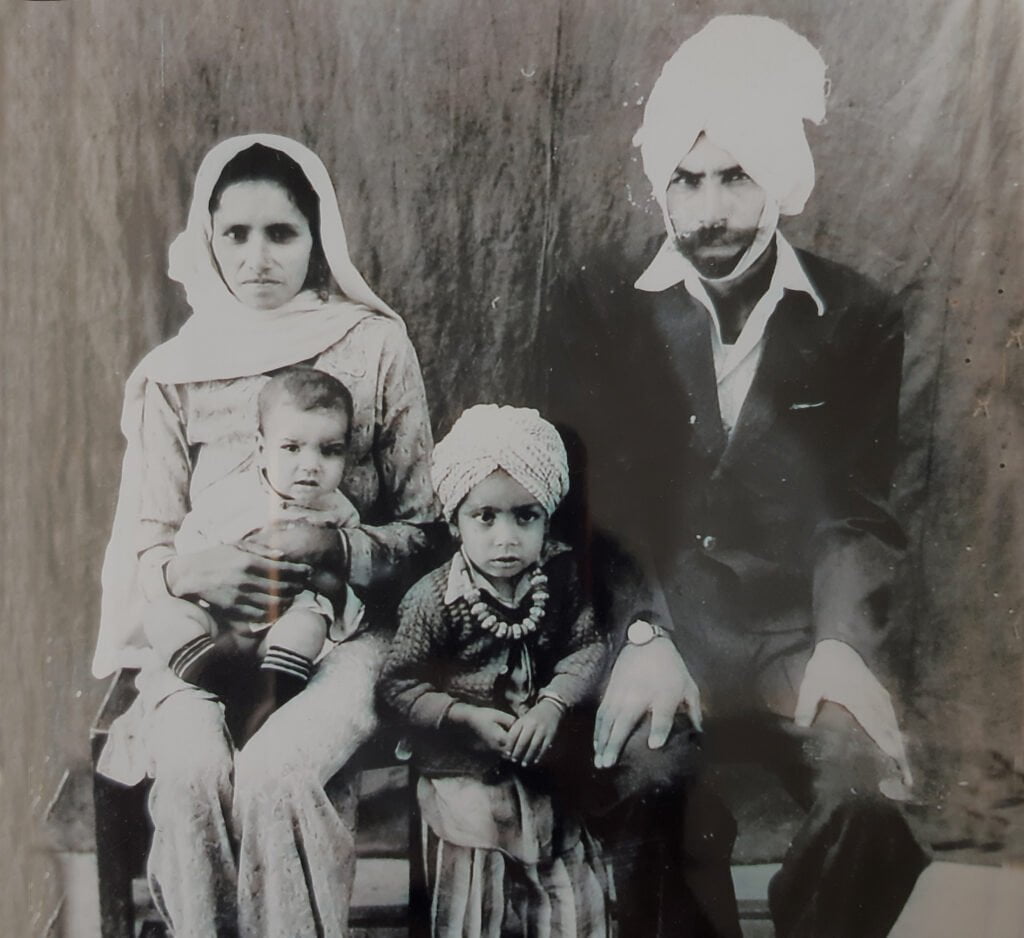
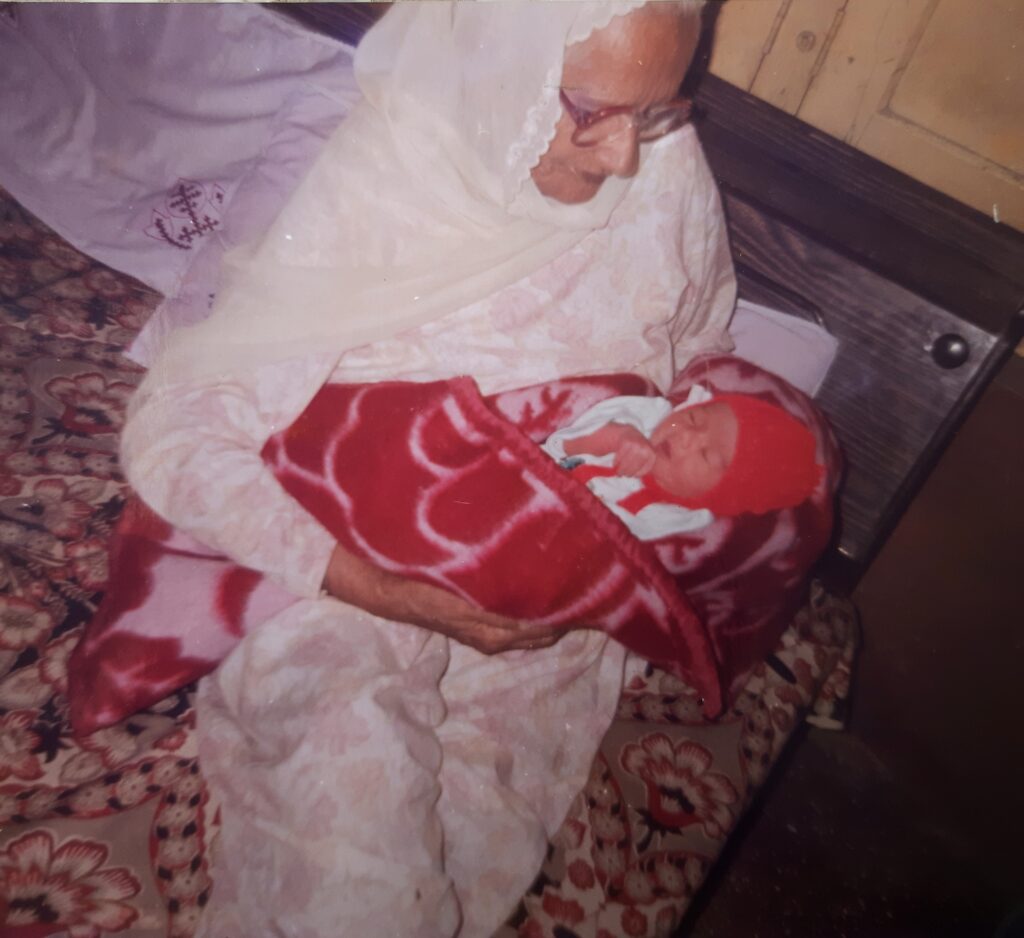
It was like opening a pandora box. All of her things were still in there. Her clothes – when going outside, she would wear men style kurtas with a collar and pockets on both sides, with a ghaghra. There were trinkets, handwritten notes, and photographs. Even her hisaab kitaab – she never went to school but could calculate everything in her head, including interest rates and then would ask someone else to note those down. My nana was a very timid person, so my nani ran the whole house, down to the finances, even the dealings to buy land.Seeing all this, she finally felt like a real person and not just an idea in my head. I felt closer to her than ever before; holding her things in my hands was almost like feeling her presence with me. And that’s when I realized that objects are powerful holders of memories.
The story of the salwar starts with my nani’s mother in law. I don’t know the exact history because she passed away in the late 1930s when my nana was around 10 years old. She had three sons, my nana being the youngest. After she passed away, all of her clothes and other items were packed and kept away. I’m assuming that these had been brought as a part of her wedding trousseau, so they must have dated to the late 1910s. The salwar is a beautiful shade of emerald green and sewn in silk satin. Given its age, it remains in good condition, which makes me think that it may have only been worn a handful of times. The paunch has a design and some lace. What astonished me when I first got the salwar was the ginormous ghera. As opposed to the salwars of today that have a belt and pleats, this has no belt but a ghera measuring 98 inches – which is 8 feet long! Putting the naada through is a real task. Everytime you wear it, it needs to be adjusted so that the val or folds may fall in the right places and there is no bunching of fabric anywhere. But the huge ghera does give it a very full and heavy look which modern day salwars can’t replicate as perfectly.
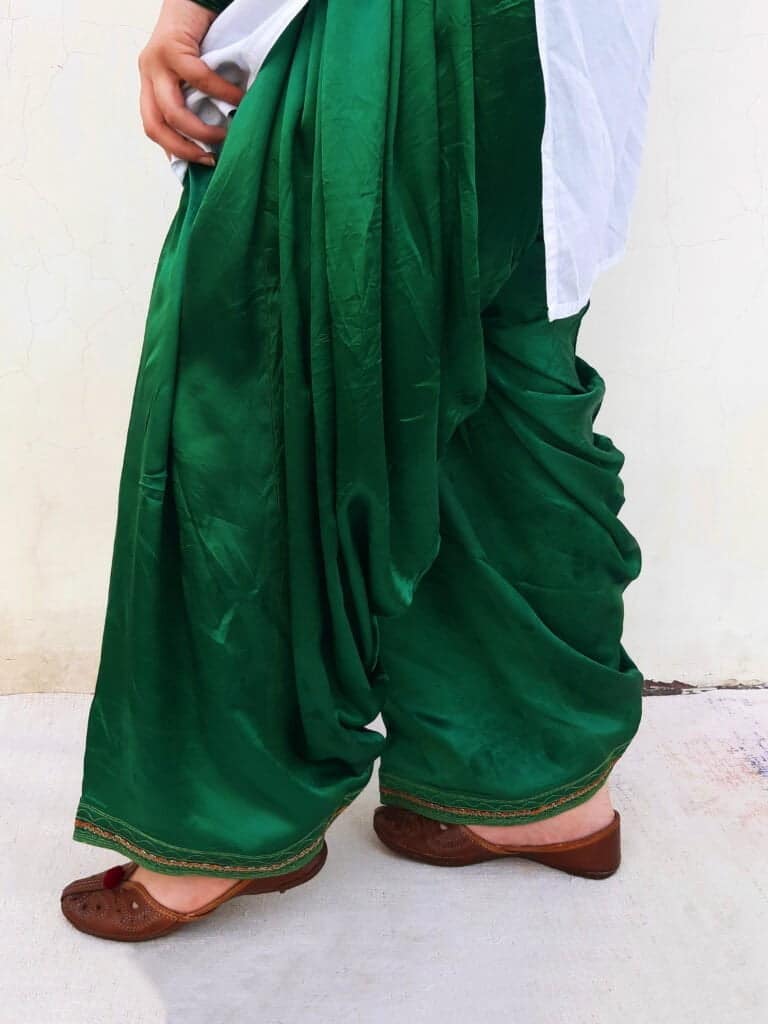
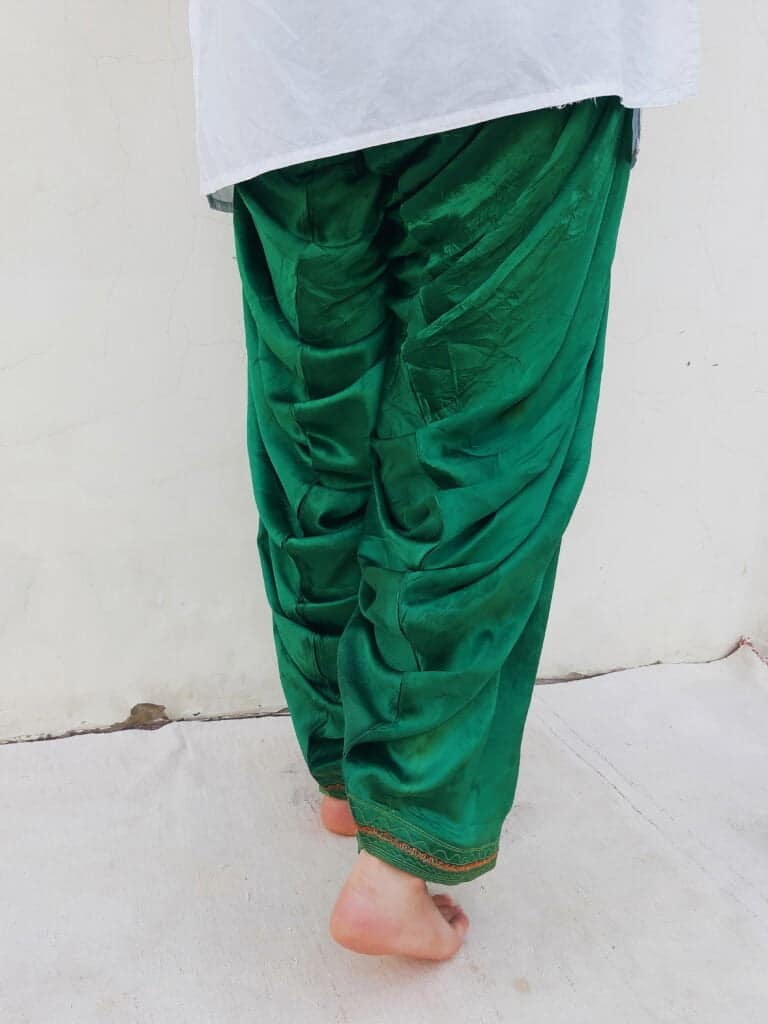
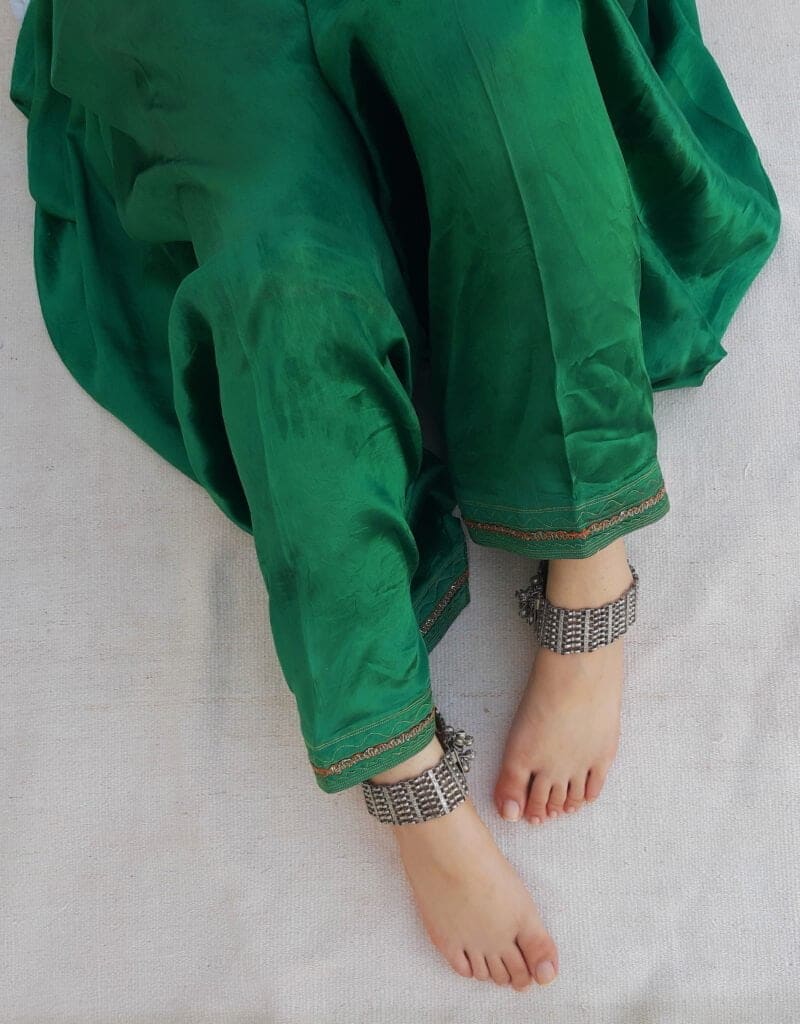
After the death of their mother, the oldest son joined the Indian Imperial Police and was sent abroad. Because there was no woman in the house, the middle son was married relatively quickly so that someone could take care of the house. With this marriage, all of their late mother’s possessions were passed down to the middle son’s new wife, Gurdial Kaur. The silver panjeb or jhanjran, were a part of her own wedding trousseau and were made a few years before her wedding at the age of sixteen or seventeen, which can be roughly estimated to 1931. The local jeweller dates the jhanjran to being close to a hundred years old, which means that they must have been forged in the middle-late 1920s. The pair have a beautiful interlinked design and small flower motifs on the clasp. They are really heavy – each independently weighing 16.8 tole (168gm) or together at 33.6 tole (336gm). They are 12 inches in length, which a band is 1.5 inches. Gurdial kaur was 5 ft 8, with big hands and feet, which explains the jhanjran’s big size. They are really loose on my mom but slide right off my feet.
Born in 1914 in village Phidde Khurd, Faridkot, Gurdial Kaur was a single girl-child. She wished for a son who would carry forward the family’s name. After trying for years, finally had twin boys. They were big and healthy and everyone was elated. But they weren’t even a month old when a lady came from the village to see the boys. As soon as she left, the babies’ bodies turned blue and they died within minutes. It is suspected that the lady poisoned them. This was a big blow to Gurdial Kaur. She blamed and cursed herself for the death of her children. She would cry endlessly and punch her own stomach and wonder why god didn’t think her worthy enough to be a mother. Decades later, when she was on her deathbed, she made my mother and her sisters feel her stomach for the knots around it. She had hit herself so hard that it had left behind permanent inflammation and her stomach was hard to touch. After the death of the twins, she never had any more children.
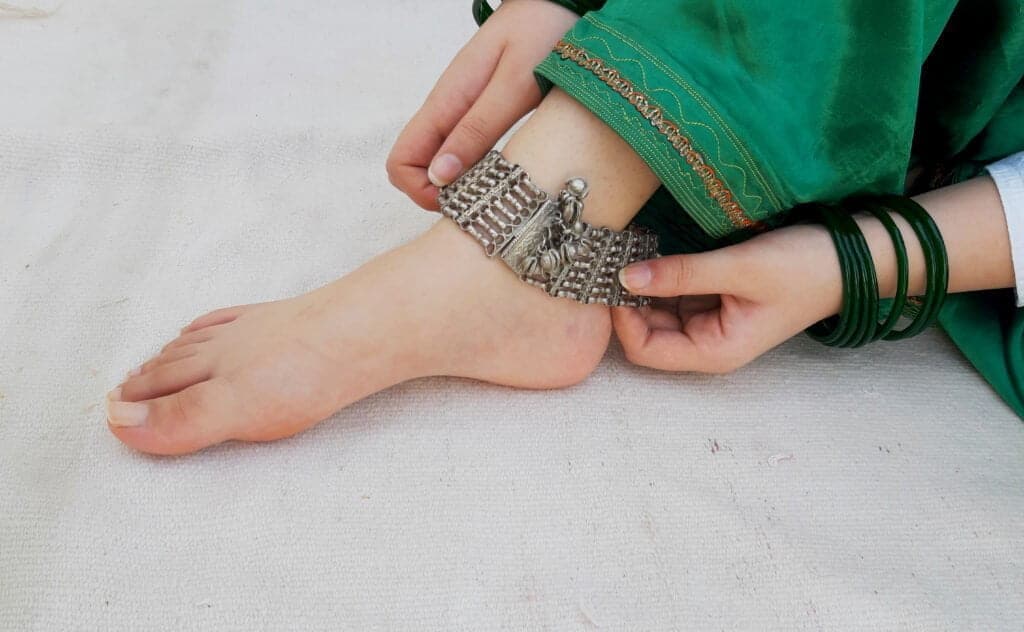

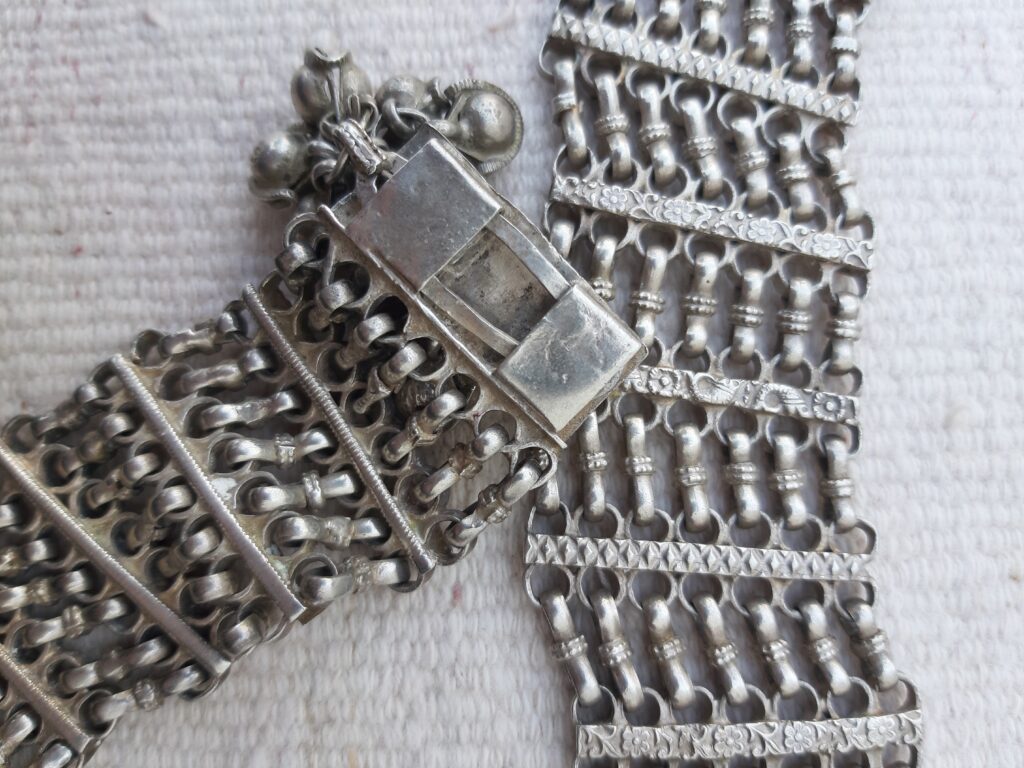

A few years after this incident, the youngest son – my nana, got married to Hardev Kaur in 1950. Gurdial Kaur performed the duties of mother-in-law at the wedding ceremonies. She had no children, and felt no need to keep anything for herself, thus, bequeathed all her heirloom jewellery and clothing to my nani. This is how my nani came to own both the salwar and the panjeb.
Born in 1929 in village Kot Sukhia, Faridkot, Hardev Kaur was fifteen years younger to Gurdial Kaur and felt more like a younger sister or a daughter, than a sister-in-law. She was treated with nothing but love and affection, and Gurdial Kaur would often do much of the hard work of the house herself, giving the easier tasks to my nani. She cared for her during her pregnancies and treated her children – my mother and her five siblings – as her own. And in return, the children treated her with equal love and regard, calling her “Vadi bebe” and while my nani was called “bebe”
When my nani passed away from a sudden heart attack at seventy-four, it totally shattered Vadi bebe. She laid her head in her lap and cried all night lamenting about how she was older and supposed to have gone first. She never really recovered from the shock of losing my nani. She had lost her sister, her best friend. Soon, her health started to deteriorate and just three years later, Vadi bebe also passed away.
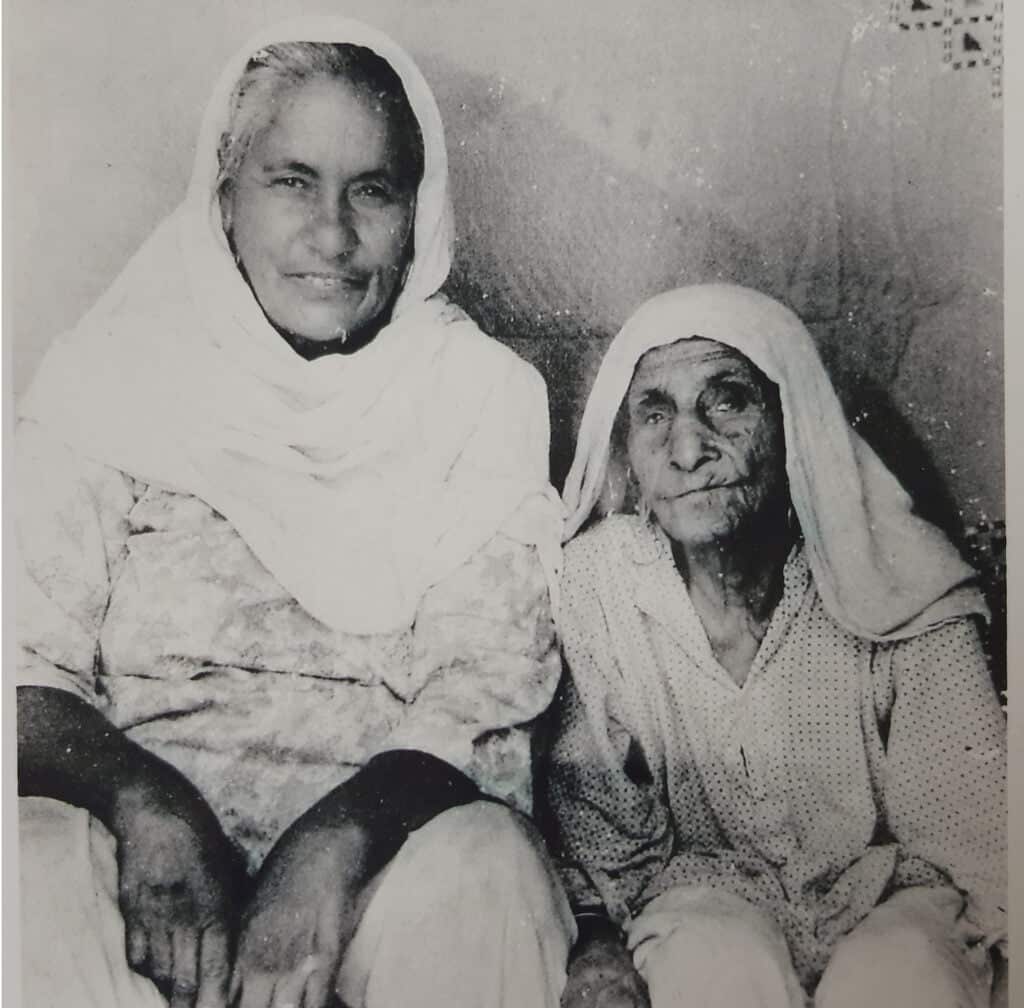
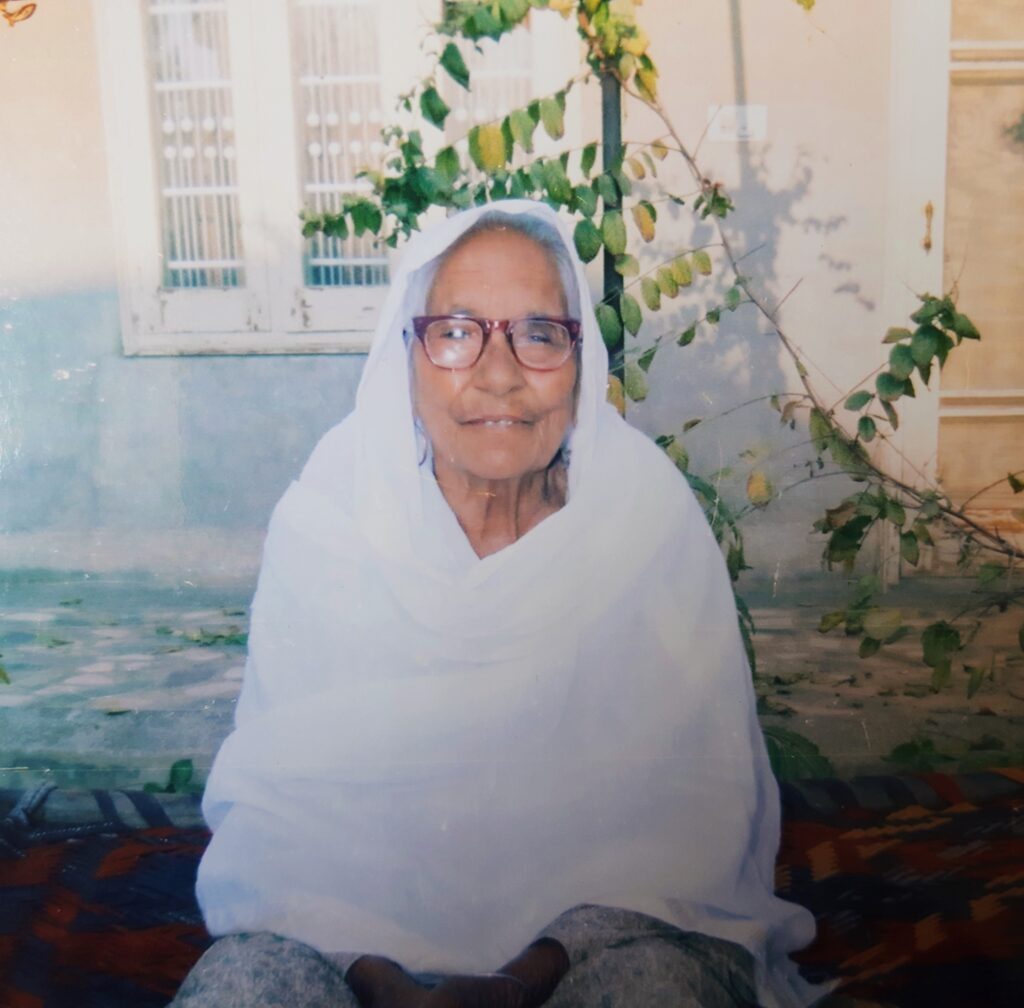
For me, the emotional value of an object matters way more than its physical value. After my nani’s death, all of her gold jewellery was set aside to be stored in a safe place, and over the years, all of it has been exchanged for new jewellery. Silver jewellery holds lesser value than gold so the jhanjran were left in her sandook and forgotten over time. Their lower monetary value is perhaps the only reason they have survived in the family this long. I now keep them in my mother’s cupboard, but like to take them out from time to time, and run my hands over them or try them on. I can’t really wear them outside because they are too big and I don’t wish to alter them in any way or get them resized. I want to keep them as they are, in their rustic glory.
Having known their history, these two objects now hold a different and more deeper meaning to me. They gave me a chance to learn so much about the lives of the two most important women in my mother’s life. She teared up multiple times telling while me about them and during the narration of this draft. She still misses them deeply, which makes these all the more valuable to me. Earlier I only associated them with my nani and her memory, I had no idea about how she came to own them. But now these are not just objects that belong to one ancestor, but represent the beautiful bond shared by two strong women in my lineage, and hold the stories of their lives. It feels like half of the jhanjaran’s weight comes from the history they hold within them.
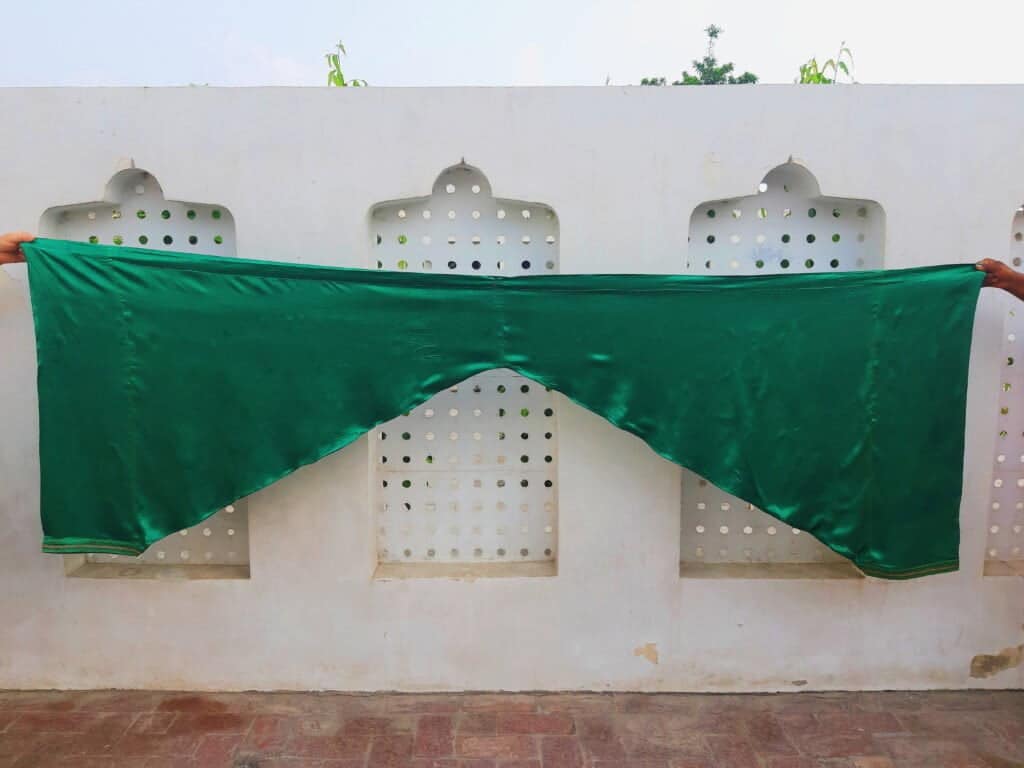
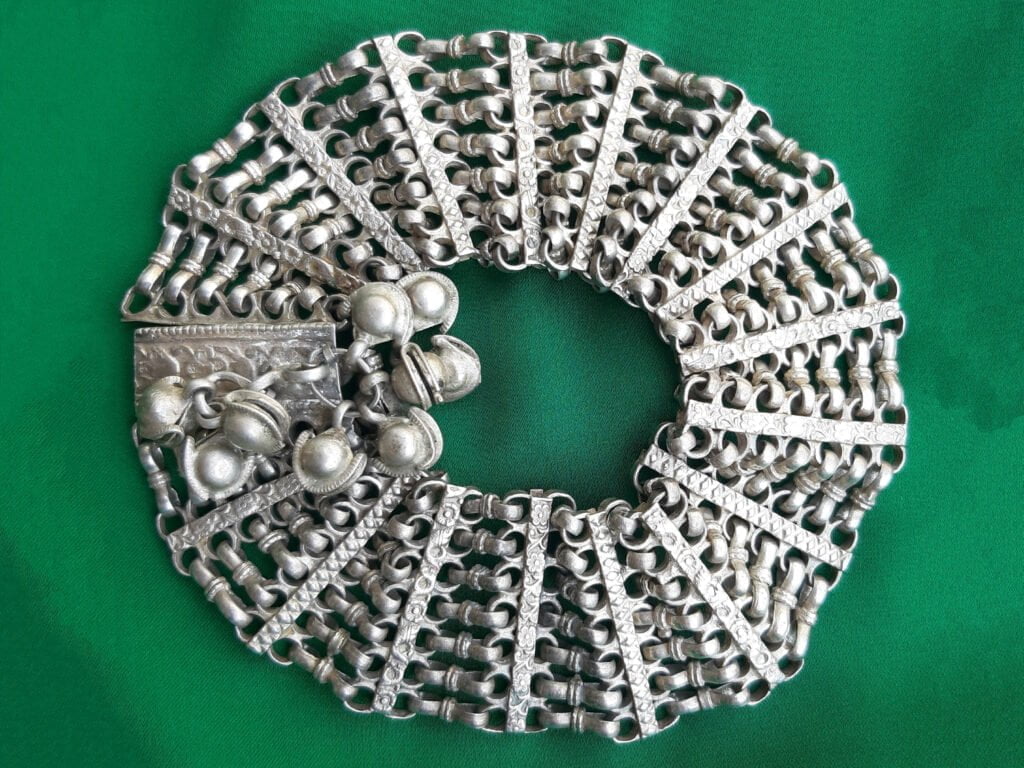

Beautiful..